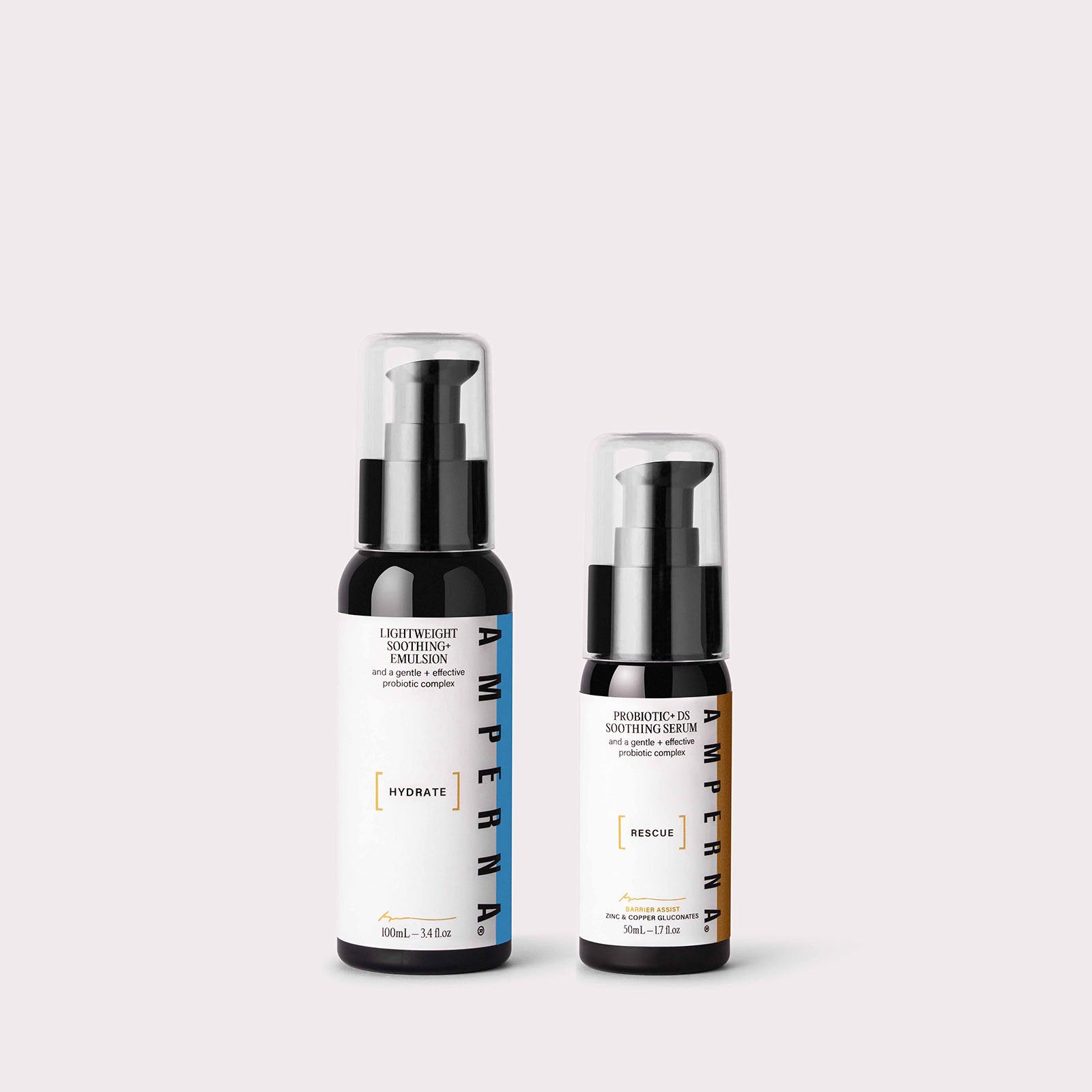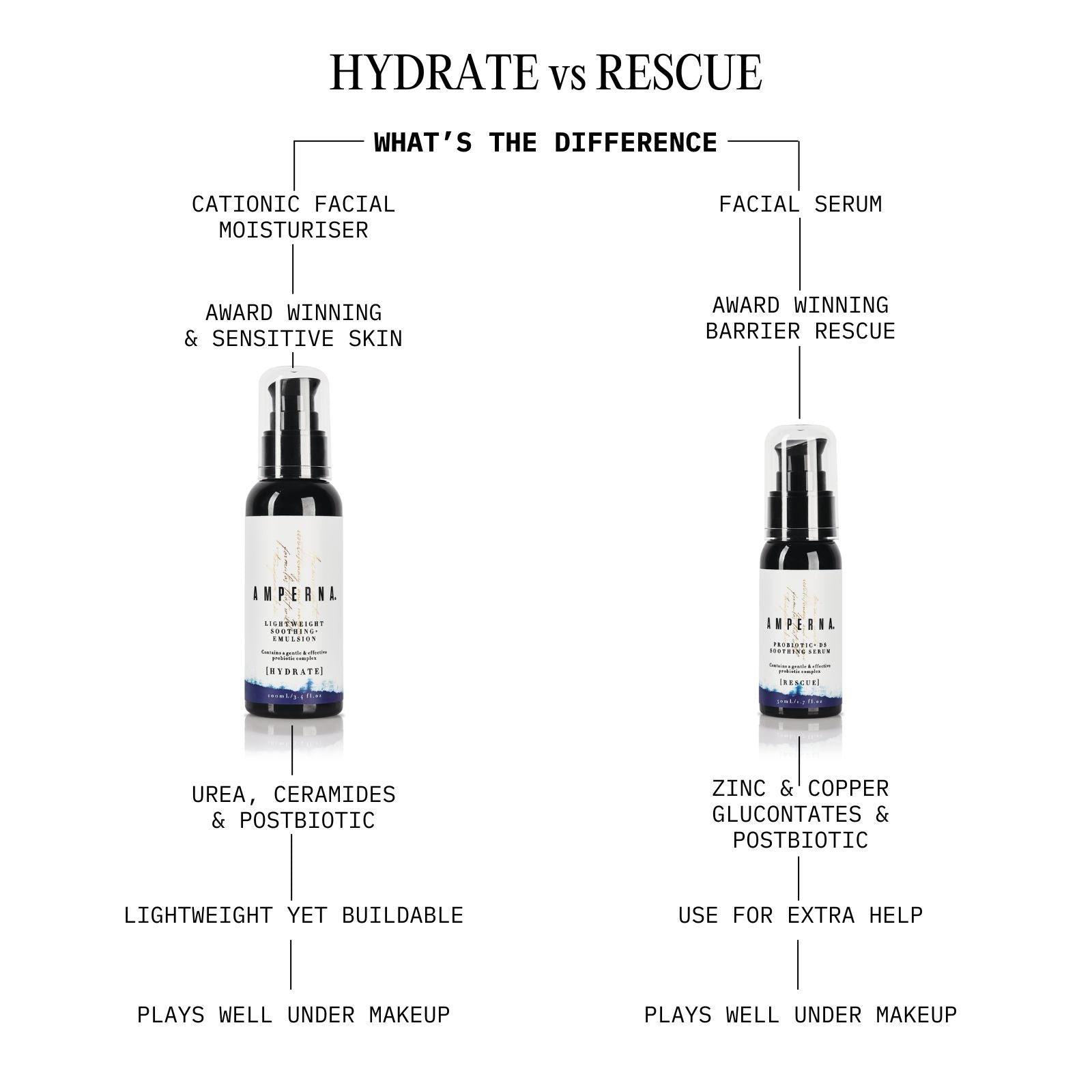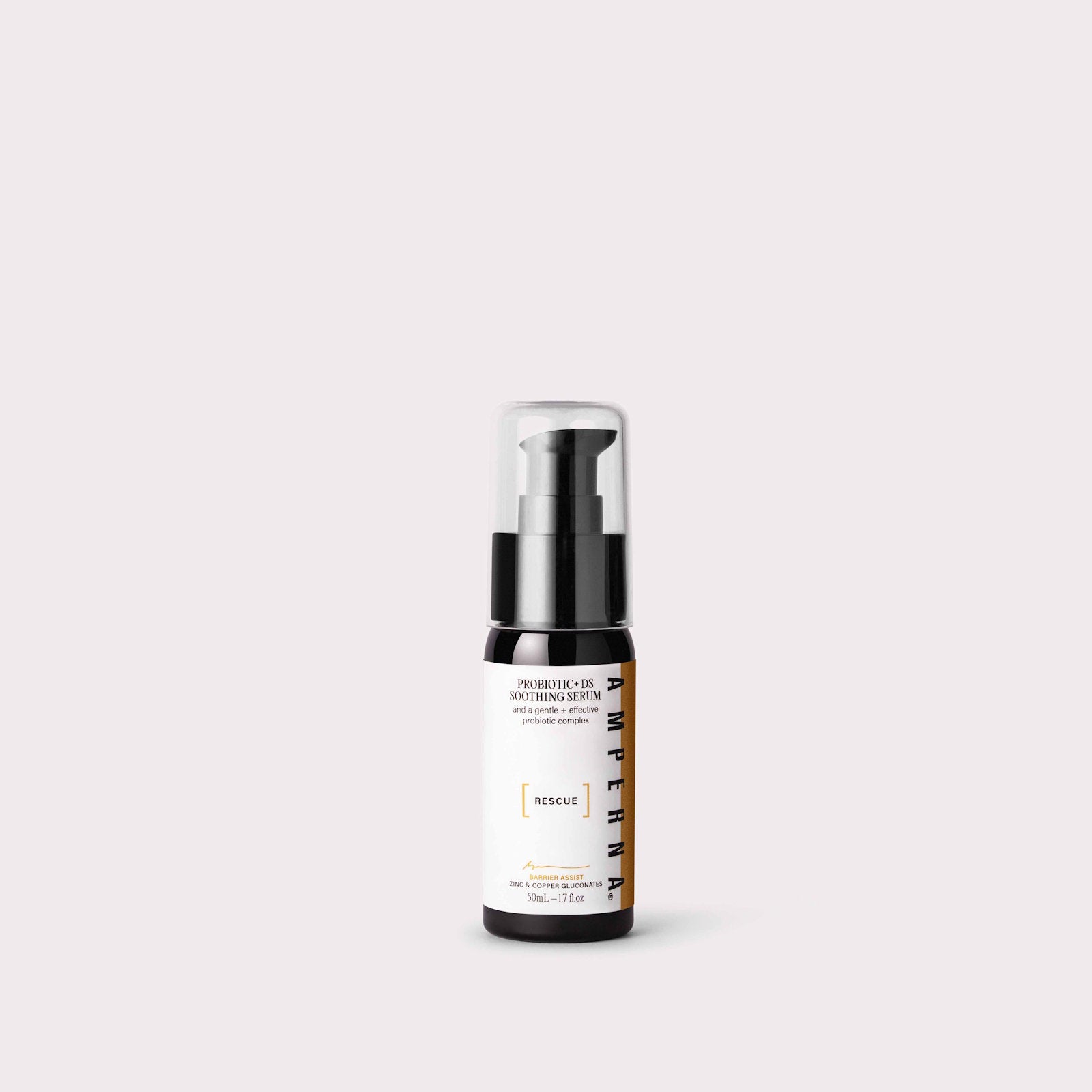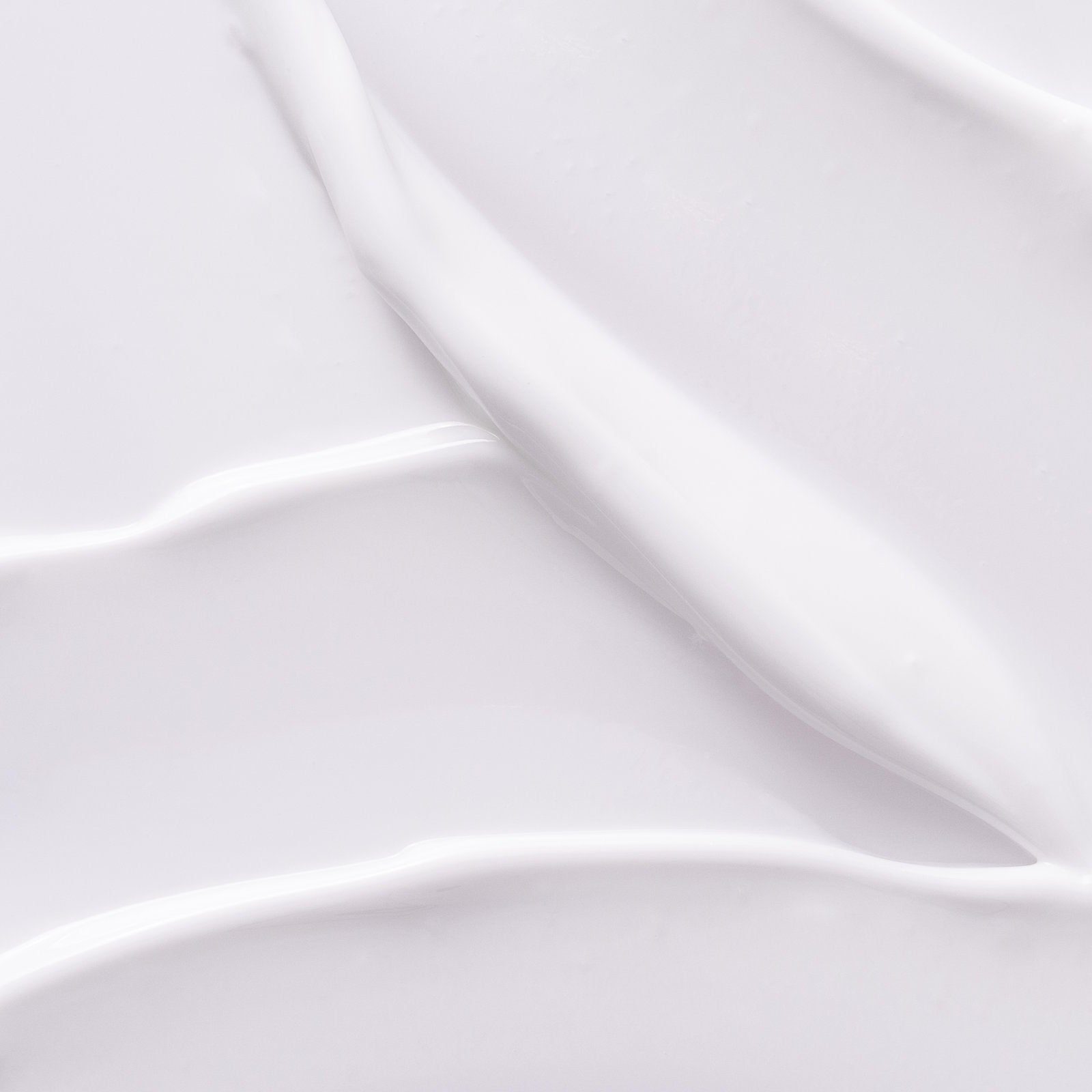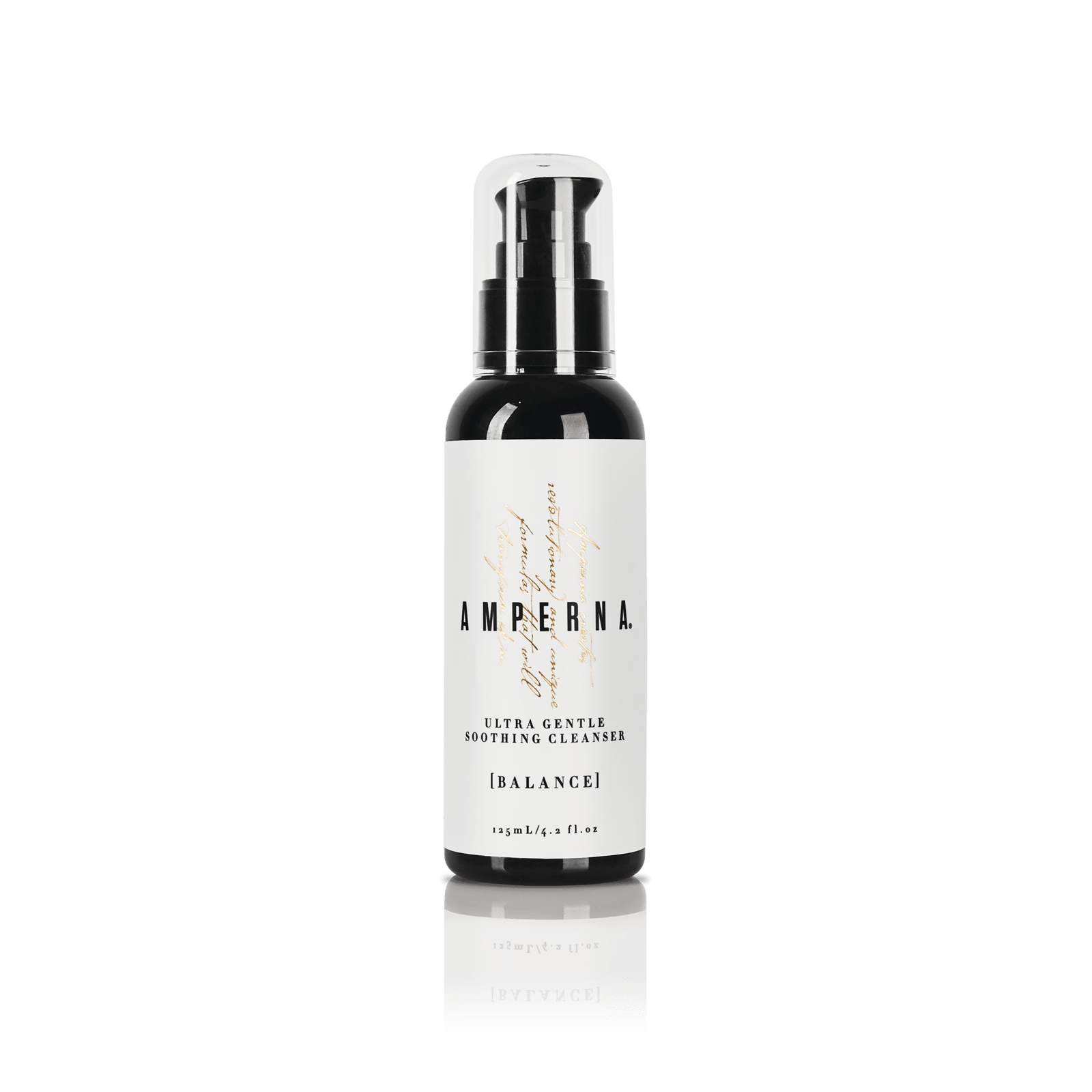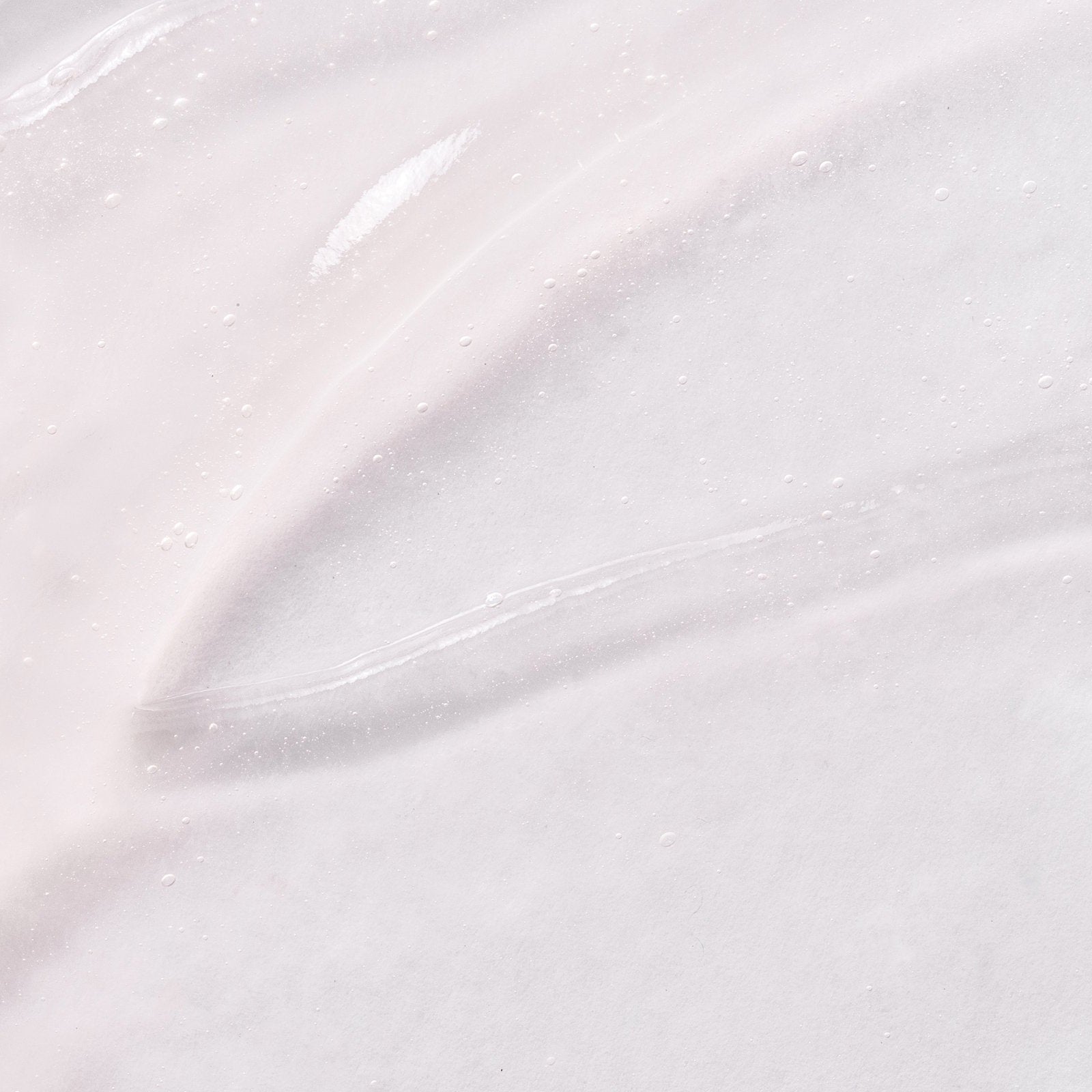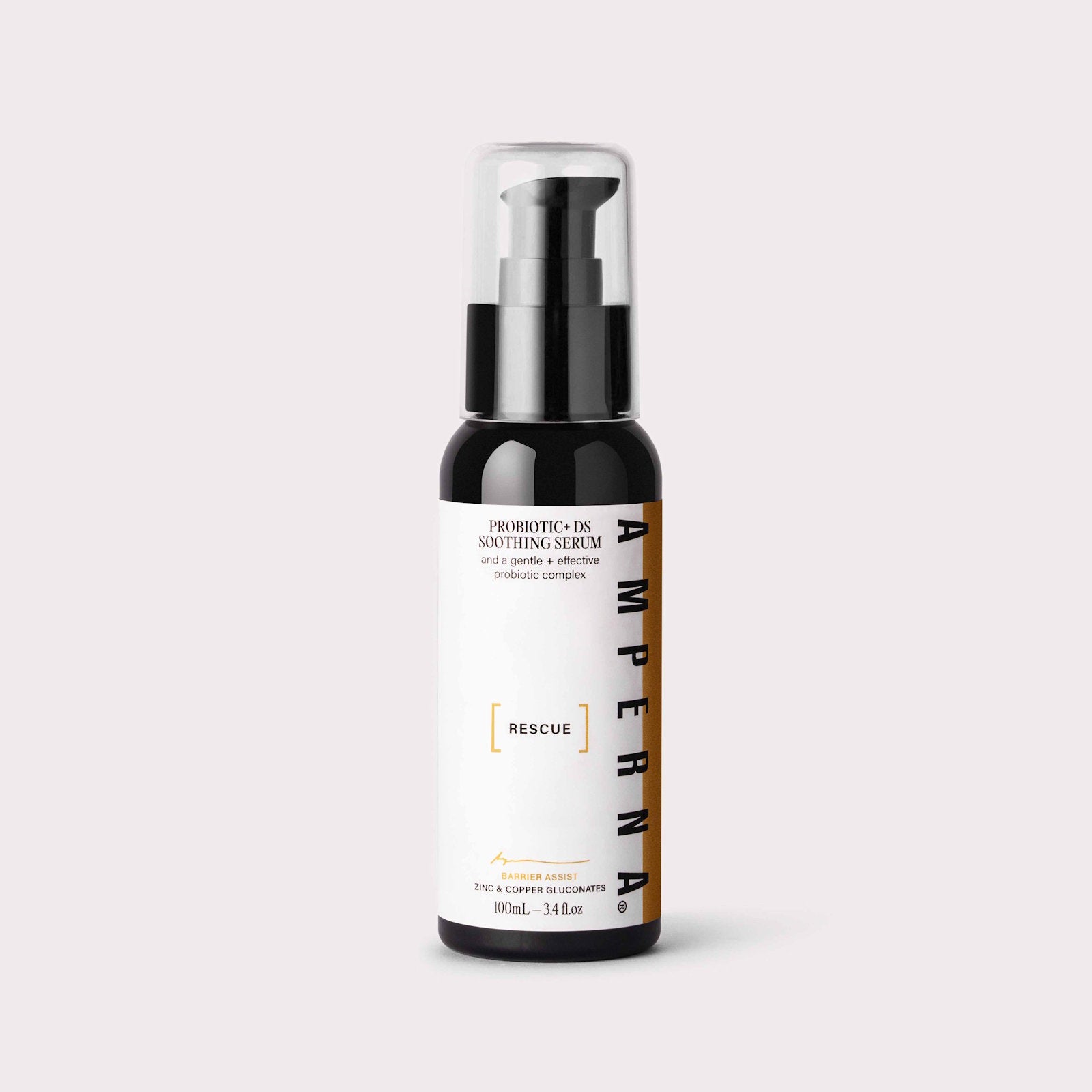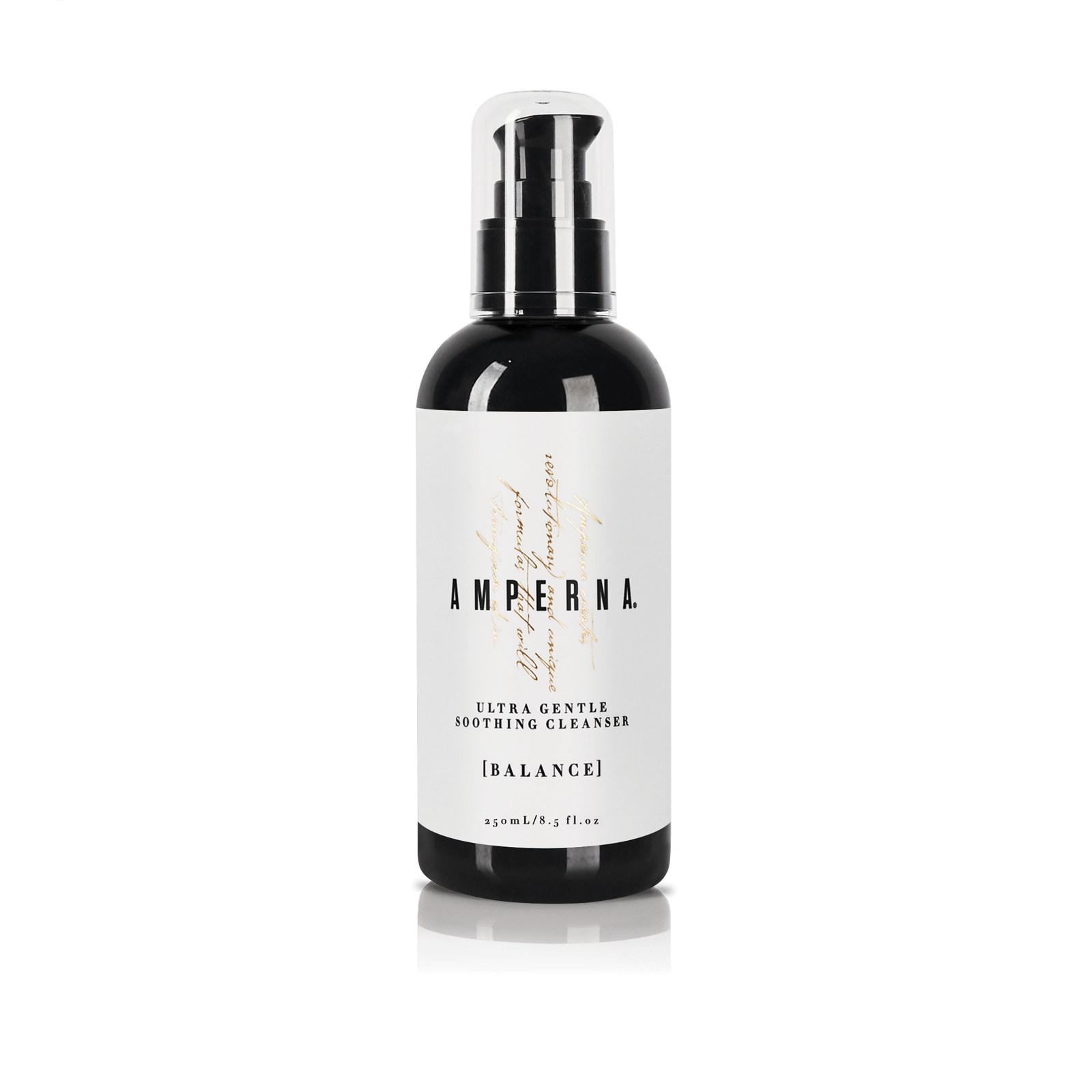The menstrual cycle does not refer to when you just get your period. It is a reoccurring (28 day on average) cycle divided into four phases:
- Menstrual phase
- Follicular phase
- Ovulation phase
- Luteal phase
During each of these phases, the skin experiences hormonal (oestrogen and progesterone) fluctuations that can cause a variety of concerns, such as breakouts, sensitivity, dryness, uneven skin tone, and hormonal acne. These hormonal changes and imbalances can impact the texture, oiliness, hydration, and overall appearance of the skin. Hormonal surges can also affect melanin synthesis, which can cause dark patches or hyperpigmentation on the skin.

The menstrual cycle and skin are interrelated as the saying goes ‘what is happening on the inside will present on the outside’. Not only does your skin have its own hormonal and neuroendocrine system designed to deal with stress, but your body also uses the skin to express whatever is going on.
Moreso, understanding how your hormones and menstrual cycle effects your overall health and wellbeing is crucial.
*Consult with your doctor if you need more information or support with understanding your cycle and hormones.
Below we will cover an overview on how each phase of your menstrual cycle affects your skin and how you can support your hormones and skin holistically with your diet.
Menstrual Cycle Phases
1. Menstrual Phase
Your Skin
The menstrual phase is the first stage of the menstrual cycle, aka, the first day of your period. During the menstrual phase, when estrogen and progesterone levels are at their lowest, the skin's barrier function may become impaired, leading to reduced skin hydration and irritation. This can result in dryness and an overall dullness of the skin. You may notice any fine lines or wrinkles may appear more obvious.
Skin conditions, such as dermatitis and psoriasis, may be worse just before or during your period.
Focusing on hydrating and moisturising the skin using ingredients such as hyaluronic acid, peptides and ceramides can help counteract dryness. Removing any harsh or strong actives like retinoid in your skincare routine would be a good idea during the menstrual phase.
Trying new skincare products would not be recommended right now.
Foods to eat and to avoid
Your body is undergoing a controlled inflammatory response so nutrient-dense, iron, and mineral rich foods is what needs to be on the menu during this period. Think of this as a time for your body to rest and replenish.
Foods to eat:
- Broccoli
- Brown Rice
- Chia Seeds
- Cucumber
- Dark chocolate (in moderation)
- Fatty fish (Salmon and Mackerel)
- Spinach
- Lentils
- Quinoa
- Walnuts
- Watermelon

Foods to Avoid:
- Sugary processed food (biscuits or lollies)
- Dairy (if it causes you bloating or cramps)
- Alcohol
Follicular Phase
Your Skin
The follicular phase begins on the first day you menstruate, overlapping when your period starts. It lasts until ovulation, when one of your ovaries releases a mature egg. Oestrogen and testosterone start to rise during this phase, whereas progesterone is still low. Meaning sebaceous gland activity is still reduced.
During the follicular phase your skin should start to normalise and appear smoother and calmer due to changes in hormones and increase in collagen production. Slowly incorporating exfoliating products and actives back into your skincare routine is recommended during this phase.
And following your usual skincare routine for your skin type or skin concern/s is key to maintaining healthy glowing skin during the follicular phase.
Foods to eat and to avoid
Enjoy a normal balanced diet during this phase, incorporating plenty of healthy and nourishing foods to provide nutrients to a maturing follicle.
Foods to eat:
- Avocado
- Berries
- Eggs
- Fermented foods (yoghurt, sauerkraut)
- Leafy greens
- Lean proteins (chicken, turkey, tofu)
- Nuts and seeds
- Whole grains
Foods to Avoid:
- Alcohol
- Too much caffeine
- Fried foods
Ovulation Phase
Your Skin
Approximately day 14 of your cycle ovulation happens and your skin is usually looking it’s best during this phase. Your skin will likely appear clear and bright until testosterone and oestrogen begin to decrease. Oestrogen, which peaks during ovulation, often gives the skin a healthy glow. However, your progesterone levels will start to rise, meaning sebum production increases which can lead to oilier skin.
Note that some women experience minor breakouts during this phase due to heightened oestrogen levels which is very normal. Some women are more sensitive to hormonal fluctuations than others.
Non-comedogenic skincare is advantageous as well as avoiding oil-based products during the ovulation phase. Layering extra oil onto skin that is now experiencing higher than usual levels of sebum can cause blocked pores and create or exacerbate acne breakouts.
Keeping your skincare regime simple is key, focusing on gentle cleansing, a hydrating serum, lightweight moisturiser and of course an oil-free SPF during the day.

Foods to eat and to avoid
During your ovulatory phases you want to start supporting your detoxification pathways to make it easy to metabolize and eliminate the used hormones from your follicular phase. Focus on liver-loving fibre-rich foods like cruciferous vegetables, antioxidant-rich berries, and protein.
Foods to eat:
- Asparagus
- Berries
- Brazil nuts
- Chia seeds
- Eggs
- Flaxseed and Sunflower seeds
- Green leafy veggies
- Lean meats
- Tuna
- Zinc-rich foods (oysters, pumpkin seeds, lean beef)
Foods to avoid:
- Sugary foods
- Trans fat.
Luteal Phase
Your Skin
Bloating, breast swelling, mood changes, headaches, insomnia, food cravings and weight gain are common symptoms during the luteal phase.
Fondly referred to as PMS (premenstrual syndrome). I use the term ‘fondly’ very lightly.
The luteal phase is the last stage of the menstrual cycle, which occurs after ovulation and before the start of the next period. The main function of the luteal phase is to prepare the uterus for a possible pregnancy by thickening the lining of the endometrium (the inner layer of the uterus) with progesterone, a hormone produced by the corpus luteum. If no fertilisation takes place the corpus luteum degenerates, progesterone levels drop causing the endometrium to shed and start a brand-new menstrual cycle.
Skin barrier permeability is greater during the luteal phase, just before menstruation begins, which causes the skin to be more sensitive to allergens and irritants. For this reason, some women experience eczema flare-ups in the days leading up to the start of their period.
Managing excess oil, keeping acne-causing bacteria at bay, and preventing dead cell build-up is key to managing skin during the luteal phase. Since your skin is sensitive during this part of the cycle, keep your skincare gentle and avoid abrasive scrubs.
Foods to eat and to avoid
To help your PMS symptoms you should turn to amping up your magnesium intake alongside foods that support your detox pathways.
Foods to eat:
- Almonds
- Bananas
- Chickpeas
- Dark leafy greens
- Peanuts (if not allergic)
- Pumpkin seeds
- Quinoa
- Sweet potato
- Zucchini
- Whole grains
Foods to avoid:
- Alcohol (exacerbates mood swings and disrupts sleep)
- Excess caffeine
- Sugary foods (may contribute to premenstrual migraines and mood swings)
- High-sodium foods (may contribute to bloating and water retention)

Four General Skincare Tips for Each Phase of Your Menstrual Cycle
- Track your cycle - One of the best things you can do for your skin is to track your menstrual cycle. This will help you to know when your skin is going to be the most sensitive and when you need to take extra care of it.
- Stick to a consistent and simple skincare regime - Please read this great article if you have not done so already!
SKIN STREAMING: Now THIS is What we Have Been Talking About! - Gentle products - Especially during your luteal and menstruation phase. You should avoid using harsh exfoliants, such as scrubs, on your skin. And avoid using products that contain alcohol or fragrance, as these can be drying and irritating.
- Listen to your skin - Our skin is our largest organ and has an incredible and innate way to communicate with us what is going on internally in our bodies. Pay attention. You should only use the products that your skin truly needs. If your skin is feeling dry, apply more moisturizer. If your skin is feeling sensitive, switch to a gentle cleanser.
In summary
Everyone's skin may respond differently to hormonal fluctuations during their menstrual cycle. Some people may experience more significant changes in their skin, while others may not notice much difference. To minimize the potential effects of hormonal changes in the skin during the menstrual cycle, maintaining a consistent skincare routine and adjusting products based on specific skin concerns can be helpful.
The average menstrual cycle lasts about 28 days, and hormones fluctuate continuously throughout. During the first half of the menstrual cycle, oestrogen levels rise. During the second half of the cycle, progesterone levels rise.

As your period approaches the levels of both hormones fall. Meanwhile, your testosterone levels stay about the same. This means that before and during your period, your testosterone activity is relatively higher than that of oestrogen and progesterone.
Different days of the menstrual cycle can affect the skin differently. During menstruation, low estrogen levels can result in dry and dull skin. As the cycle progresses to the follicular and ovulation phase, estrogen levels rise which can contribute to a natural glow and improvements in the skin's overall appearance. Lastly during the luteal phase, progesterone levels rise, which can cause an increase in sebum, producing excess oil that can lead to clogged pores and breakouts.


